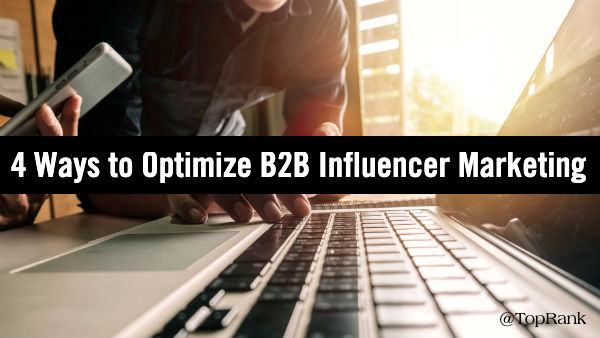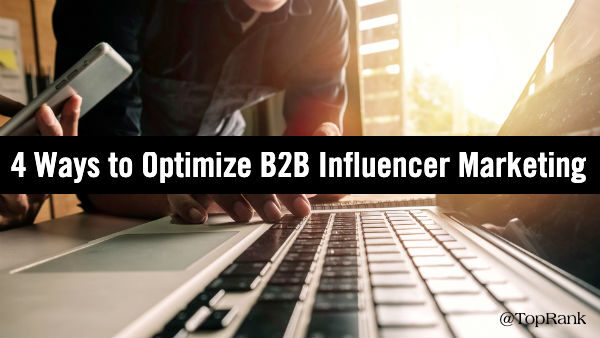
Uncertainty for some is opportunity for others. While much is being said about changes in influencer marketing approach and B2C influencers losing work at scale because events are now cancelled and industries like retail, travel and hospitality have been disrupted due to COVID-19, consumer behavior has decidedly shifted towards digital experiences.
While in-person events have been a staple for B2B marketers, we’ve seen how working with digital influencers on co-created content can be a sound alternative.
How brands approach marketing during a crisis makes the issue of trust even more important. When planned and implemented effectively, B2B influencer marketing programs build trust and confidence for buyers, influencers and the brand.
At the same time B2B marketers are emphasizing purpose and people over profit in their marketing messages, the need to deliver on new business and revenue hasn’t gone away. Here are 4 considerations on how B2B influencer programs can be optimized, while still being empathetic and thoughtful to the new normal.
1. Find the opportunity gap.
Any marketing investment during a time of crisis will be under scrutiny. Whether your business has had to pivot or you reacting to changes in buyer behavior, it’s essential to find opportunities to provide value in ways that are truly empathetic to customers and that can drive business performance. Many companies are meeting a boost in demand for information by engaging influencers to provide thought leadership, insights and how-to content.
Also, as you plan what kind of influencer program to run, think about what goal represents an opportunity for the best ratio of importance for executives to business and customer impact relative to resources and time frame? What metrics best represents that goal?
2. Build amplification in the creation.
If you are able to secure budget and support for a business influencer campaign or program, make sure you are realizing the full value of the content reach. Structure the influencer content for easy deconstruction to shareable formats including social messages, graphics, animations and repurposed content. Also, work with business influencers who have proven distribution channels and can republish brand content on their own networks and sites. The great content you can co-create with influencers won’t be so great if the right audiences are not seeing it.
3. Maximize the content experience.
One of the big trends in B2B influencer marketing has been more interesting content formats. Think outside the box of ebooks and blog posts to visually rich and interactive content including audio, video and even VR/AR. There has been a rush of business influencers livestreaming video on Facebook, LinkedIn and Twitter. Brands should think about how they can differentiate the content experience they are creating for their customers and influencers alike. Impressive content inspires influencers to share even more plus it improves customer engagement.
4. Deliver a better influencer experience.
Experience is more important than ever, not just for customers but for influencers as well. Far too often, B2B companies treat influencers as a commodity and only think of what the brand wants. Here’s a novel idea: Provide top shelf service to your influencers to help them be more successful concomitant to the success of your influencer program. Find out what the influencers’ goals are and build a community around shared values with your influencers. Share promotion messages and goals with influencers and encourage a team approach vs one to one communications. Think more “we” vs. “me”.
Rani Mani, Monica Grant and the team at Adobe do a fantastic job of this with the #AdobeInsiders program.
These opportunities to optimize B2B marketing performance are not unique to marketing during a time of crisis. They are universally useful in any environment. But with so many companies and individuals facing uncertainty. it’s essential that businesses optimize for trust and what better way than to work with those who already have the trust and attention of customers?



